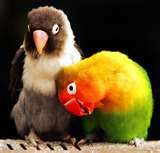"he who loves bird . . .
g r a i n e s d e l a p i n s . p h o t o g r a p h y . t h e q u i e t e y e . a r t . l i f e . f r i e n d l y . b o o k s .
13.5.10
10.5.10
mole: a poem by mary oliver . . .

the first loose
levels of earth
they're there __ quick
as beetles, blind
as bats, shy
as hares but seen
less than these __
traveling
among the pale girders
of appleroot,
rockshelf, nests
of insects and black
pastures of bulbs
peppery and packed full
of the sweetest food :
spring flowers.
Field after field
you can see the traceries
of their long
lonely walks, then
the rains blur
even this frail
hint of them__
so excitable,
so plush,
so willing to continue
generation after generation
accomplishing nothing
but their brief physical lives
as they live and die,
pushing and shoving
with their stubborn muzzles against
the whole eart,`finding it
delicious.
_ mary oliver
The Truro bear
and other adventures
poems and essays
Beacon Press. Boston.
www.beacon.org
henri cartier- bresson @ moma, nyc
8.5.10
the truro bear

People have seen it __ three or four,
or two, or one. I think
of the thickness of the serious woods
around the dark bowls of the Truro ponds;
I think of the blueberry fields, the blackberry tangles,
the cranberry bogs. And the sky
with its new moon, its familiar star trails,
burns down like a brand - new heaven,
while everywhere I look on the scratchy hillsides
shadows seem to grow shoulders. Surely
a beast might be clever, be lucky , move quietly
through the woods for years , learning to stay away
from roads and houses. Common sense mutters:
it can't be true , it must be somebody's
runaway dog. But the seed
has been planted , and when has happiness ever
required much evidence to begin
its leaf-green breathing ?
__ Mary Oliver
(Truro, near Cape Cod. Massachusetts, USA)
- The Truro Bear and Other Adventures
Poems and Essays
Mary Oliver
Beacon Press
Boston
6.5.10
at seventy : a journal by may sarton (excerpt)
5.5.10
matisse : radical inventions 1913-1917 . . .

Matisse: Radical Invention, 1913 - 1917
In the time between his 1913 return from Morocco and his 1917 departure for Nice, Henri Matisse produced some of the most demanding, experimental, and enigmatic works of his career—paintings that are abstracted and rigorously purged of descriptive detail, geometric and sharply composed, and dominated by the colors black and gray. Works from this period have typically been treated as unrelated to one another, as aberrations within the artist’s development, or as responses to Cubism or World War I. Matisse and the Methods of Modern Construction will examine the physical production of the paintings and the essential context of Matisse’s studio practice. Matisse himself acknowledged near the end of his life the significance of this period when he identified two works—the Art Institute of Chicago’s Bathers by a River (1909–10, 1913, 1916–17) and the Museum of Modern Art’s The Moroccans (1915–16)—as among his most “pivotal.” The importance of this moment resides not only in the formal qualities of the paintings—what Matisse called “the methods of modern construction” —but also in the physical nature of the pictures. Rather than produce alternate versions of compositions in graphite, ink, clay, or paint, Matisse limited his exploration to a single canvas, which in its heavily reworked and abstracted final state suggests that the act of painting itself became an added subject for him. The concept of Matisse: Radical Invention, 1913–1917 evolved from the study of Bathers by a River that employs new analytical and scientific technologies to uncover the evolutionary history of this painting’s creation. This groundbreaking research has revealed much about Matisse’s methods, as well as a number of unexpected connections with other works, most significantly,The Moroccans and The Piano Lesson (1916) at the Museum of Modern Art, New York. MoMA is likewise engaged in an investigation of works in its collection. The partnership of the Art Institute and MoMA has resulted in new information about Matisse’s pigments, experimental techniques, and compositional choices. These findings hold the promise of a fundamental reassessment of Matisse’s experimental working through new, “modern” pictorial means and its impact on the rest of his career. 368 pages with 650 illustrations. matisse : radical inventions 1913-1917 . the art institute chicago. March 20–June 20, 2010
matisse at the art institute in chicago

Matisse: Radical Invention, 1913–1917 March 20–June 20, 2010. art institute chicago
bathing in happiness : matisse in chicago

So What About This Record-Setting Picasso?




